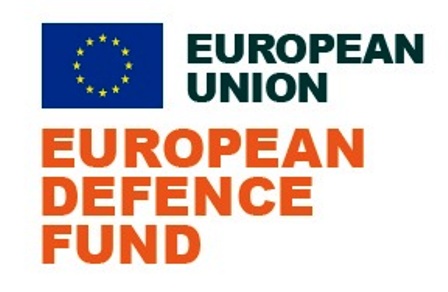
Six research and development projects in which Navantia has a role will be funded by the 2023 European Defence Fund (EDF) call, according to the selection announced by the European Commission. The projects, valued at a total €520 million, demonstrate Navantia’s commitment with R+D as well as the company’s increasing role in the European Defence.
The projects are framed in relevant areas of technological innovation in defence, such as the development of the European Patrol Corvette (EPC), as a joint project associated with PESCO in which Italy, France, Spain and Greece participate. Navantia leads two of these projects, OPTIMAS, focused on the development of secure high-speed optical communications links, key for applications such as operations with unmanned vehicles, as well as ADMIRABLE, focused on innovation in materials to improve survivability and optimize the construction of naval platforms. The E=MCM, SEACURE and E-CUAS projects focus on capabilities of high importance for the EU and its security, such as, respectively, Mine Warfare, Anti-Submarine and Sea-Bottom Warfare and Warfare against Aerial Drones (UAS); Scenarios that have become very relevant due to the proliferation of new weapons and threats that make it necessary to develop new technologies and systems.
The EPC2 Project will address the second phase of the European Patrol Corvette, in the context of the PESCO project and with the consortium formed by Naviris, Fincantieri, Naval Group, Navantia and Hydrus. The initial design of the first phase will be completed, a contract that is currently being managed by OCCAR (Organization for Armament Cooperation) and the prototype of each of the two variants of the new generation multi-role modular corvette will be built: long-range multi-purpose and full-combat multirole. The scope includes port testing of prototypes and the development of a ground-based facility for testing and qualification of systems.
Navantia is leading the OPTIMAS Project. The aim of this project is to design and develop a prototype of a high-speed free-space laser communications system for use with different satellite constellations (LEO, MEO, GEO), with multi-domain application for ground, naval and air units and the capacity to incorporate quantum key distribution (QKD). The prototype focuses on the demonstration of a high-speed optical link between an unmanned aerial vehicle and a low-orbit satellite. Twelve entities from seven countries are participating, including the Spanish SENER, University of Vigo, DAS PHOTONICS, Instituto de Astrofísica de Canarias and the Centro de Láseres Pulsados (CLPU) in Salamanca.
The ADMIRABLE project is focused on innovation in advanced manufacturing technologies and composite-based materials, with the aim of improving the operation and reducing the vulnerability of future naval platforms. The development of multi-functional materials, including the improvement of structural and electromagnetic characteristics, together with the optimisation of manufacturing processes, will increase the survivability of future European ships. This project is led by Navantia and includes 10 entities from 5 European nations. In addition to Navantia, the Spanish companies FIDAMC, DAS PHOTONICS and MICROMAG 2000 are participating.
Navantia participates in the E=MCM project, whose objective is to develop a scalable System of Systems for Mine Warfare, including threats like drifting, moored and buried mines. It will consist of advanced and scalable toolboxes of autonomous vehicles and smart platforms, as well as decision support functions. A prototype will be developed and a demonstration will be carried out at sea, in which Navantia will participate with the NAIAD system and a USV with minesweeping capability and UUV deployment. The consortium is led by Naval Group Belgium and involves 21 entities from 11 nations, including Spain’s Navantia and SAES.
The SEACURE project is dedicated to Anti-Submarine Warfare and Seabed Warfare (Seabed), for which an integrated System of Systems based on unmanned vehicles for critical infrastructure protection operations will be designed and developed. The project contemplates the demonstration at sea of a modular, agile and flexible system with the capacity to cover different missions and integrating Command, Control, Communications and Intelligence (C4I) capabilities, a set of unmanned vehicles in different domains (air, surface and submarine), as well as their corresponding payloads and effectors. Thales France leads the consortium, made up of 35 entities from 13 countries, in which Navantia participates on behalf of Spain.
The E-CUAS project will develop solutions to counter class I UAS systems, including military-grade drones such as loitering munitions, operating in isolation or in groups. This system can be deployed for the protection of critical infrastructures, both fixed and mobile, as well as on naval platforms. The system integrates various types of sensors, both active and passive, as well as different technologies for effectors (hard kill and soft kill), command and control, cybersecurity, and network and communications infrastructure. The project is led by the Leonardo (Italy) and involves 24 companies from 13 countries, including the Spanish companies Navantia, Indra, Escribano, Aertec and INTA.
The projects selected this year by the European Commission are framed in relevant areas of innovation in defence in line with the strategic priorities established at European and national level by the Ministry of Defence and the Spanish Navy.


